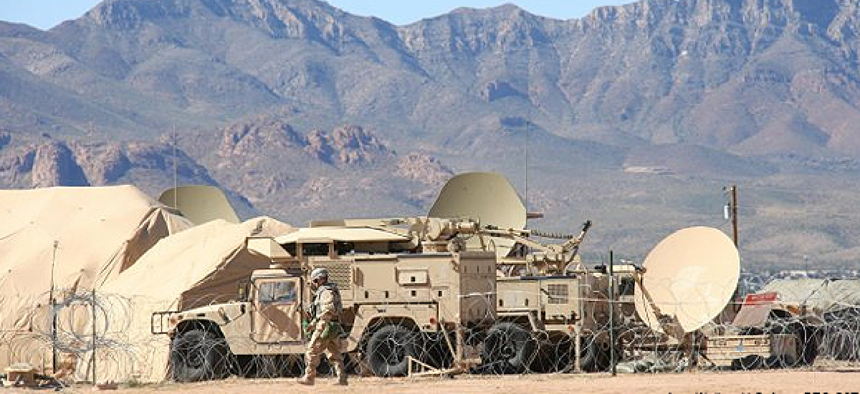Army tests commercial networking tech for the battlefield


Connecting state and local government leaders
4G LTE infrastructure is part of a new collection of advanced commercial technologies, including first responder capabilities and Wi-Fi for command posts tested at this spring's Network Integration Evaluation.
The Army is introducing 4G to the battlefield as part of a new collection of advanced commercial technologies, including first responder capabilities and Wi-Fi for command posts, the Army said in an announcement.
"Soldiers and commanders in tactical operations centers need more bandwidth for data-intensive tasks like sending large PowerPoint files, maps and full motion video," said Lt. Col. Joel Babbitt, product manager for Warfighter Information Network-Tactical, which is responsible for fielding the new equipment.
The Army fielded the Tactical Network Transmissions (TNT) equipment for the first time to the 86th Expeditionary Signal Battalion at Fort Bliss, Texas, as part of a semi-annual Network Integration Evaluation, which is designed to integrate the tactical network in a relevant operational environment.
The Army said it expects the new TNT equipment to increase network capability and throughput while reducing size, weight and power, and to help troops become leaner, more versatile and rapidly deployable. Some of the TNT equipment is also scheduled to be fielded to National Guard units for improved communications during civil support such as natural disasters.
Among the multiple capabilities provided by the TNT equipment:
- Wi-Fi coverage for the tactical operations center, which removes some command post cabling and allows soldiers to work away from their desks.
- 4G LTE infrastructure that covers the entire forward operating base, allowing soldiers to use their secure network on the battlefield via smartphones.
- A National Security Agency encryption solution, Commercial Solutions for Classified, that uses the same encryption technology as the commercial Internet, enhanced for military purposes.
- A Tropo Lite terminal that bounces microwaves off the atmosphere for high-speed transfer of large volumes of data between sites and over mountains – providing an alternative to expensive satellite communications.
- TRILOS, a smaller, more transportable line-of-sight radio system, which significantly increases throughput over legacy radios from 16 Mbps to 200 Mbps.
This spring's Network Integration Evaluation included increased joint and coalition force participation. To help support the coalition aspect of the event, the TNT package introduced the Mission Network Enclave, which can be reconfigured in minutes to provide tactical access for one of four different networks: the coalition network, Secure Internet Protocol Router, Non-secure Internet Protocol Router or commercial internet and phone service. This flexibility lets MNE support either coalition operations or civil support, such as first responders in disaster relief efforts.
"MNE is going to be great because we may be called to support a natural disaster or an emergency around the country, like Hurricane Katrina or Sandy," said Maj. Rickie Meers, operations officer for the 86th Expeditionary Signal Battalion.
"MNE is going enable us to integrate all the different civilian agencies and combine all of their different radio systems and frequencies to be able to talk quickly between each of the agencies, and with everyone out there. That is invaluable."
NEXT STORY: Is unit testing of software a waste of time?




